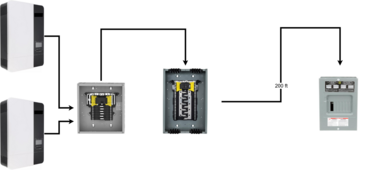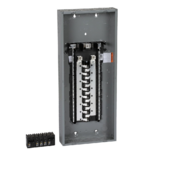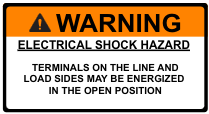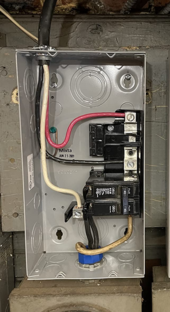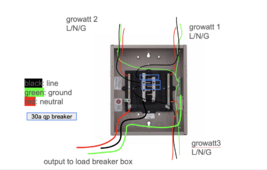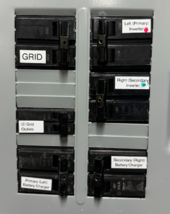Zero_PD
New Member
Hi there,
I have three Growatt inverters wired in parallel. Due to some constraints, I need to power something 200 feet away. I'm trying to figure out the cleanest way to do this in a safe DIY fashion.
Previously I've manually wired up three bus bars that I use to connect the Line/Neutral/GND of my AC outputs. Then I've wired that to outlets with a circuit breaker on the Line. Very straight forward, very DIY. Pic below. But I'm wondering if I should step it up. Should I use an actual circuit breaker box to connect the AC outputs of my inverters? And then, how do I best move this power 200 feet? I guess I could trench 6 gauge wire and then have a second circuit breaker box on the far end, or just wire up outlets at the far end?
Would love any advice. Thanks.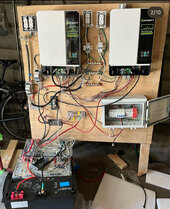
I have three Growatt inverters wired in parallel. Due to some constraints, I need to power something 200 feet away. I'm trying to figure out the cleanest way to do this in a safe DIY fashion.
Previously I've manually wired up three bus bars that I use to connect the Line/Neutral/GND of my AC outputs. Then I've wired that to outlets with a circuit breaker on the Line. Very straight forward, very DIY. Pic below. But I'm wondering if I should step it up. Should I use an actual circuit breaker box to connect the AC outputs of my inverters? And then, how do I best move this power 200 feet? I guess I could trench 6 gauge wire and then have a second circuit breaker box on the far end, or just wire up outlets at the far end?
Would love any advice. Thanks.




